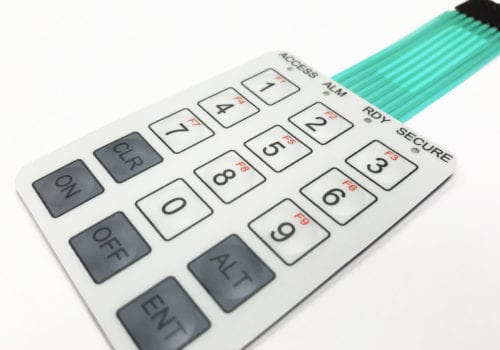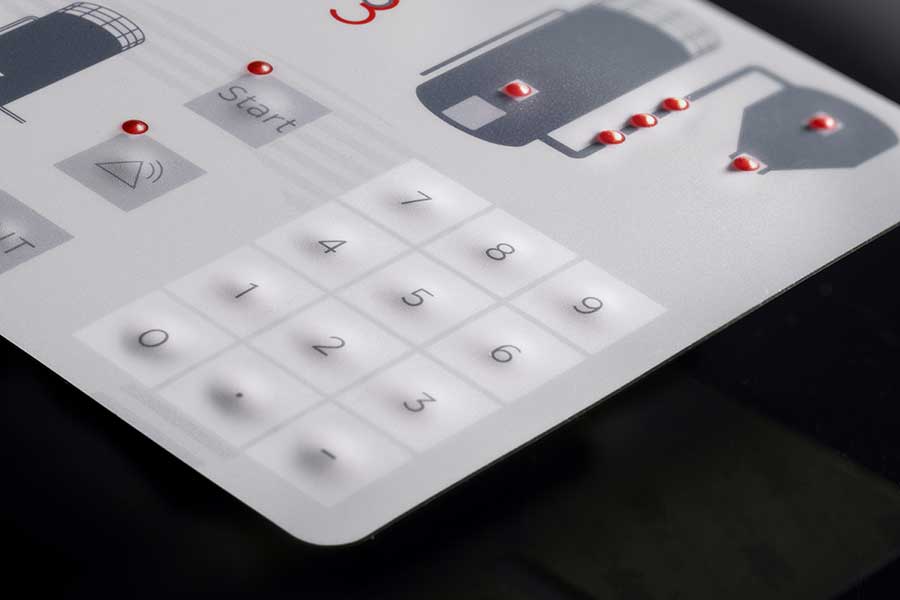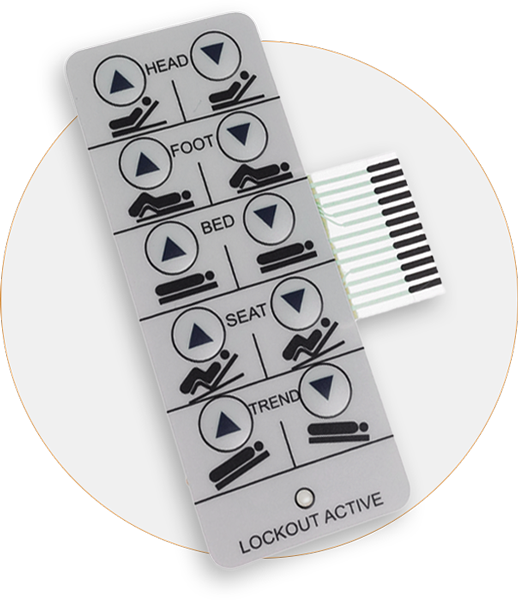Recognizing the Capability of Membrane Switches Over for Interface Devices
The performance of membrane changes represents a significant innovation in individual interface design, combining performance with visual adaptability. As sectors increasingly focus on individual experience, comprehending the nuances of membrane button technology becomes necessary.
What Are Membrane Buttons?
Membrane switches are cutting-edge interface gadgets that help with individual communication with digital tools. These versatile elements are composed of several layers, including a visuals overlay, spacer, and a printed circuit layer. The design permits a seamless assimilation right into numerous digital gadgets, boosting both the visual and functional aspects of interface.
Membrane buttons are frequently used in a wide variety of applications, from family appliances to commercial machinery and clinical tools. Their building usually features a thin profile, making them an excellent choice for portable styles. The responsive feedback provided by these switches can be crafted to fulfill certain user preferences, ensuring effective interaction in between the user and the tool.
Durability is another considerable benefit of membrane switches, as they are resistant to dirt, wetness, and chemicals, which enhances their life expectancy popular settings. Additionally, these switches can be tailored in regards to form, dimension, and visuals style, permitting for branding and user-specific functions. Generally, membrane switches over stand for a functional option for improving individual experience in digital devices, incorporating functionality with aesthetic allure in an effective manner.
Just How Membrane Switches Over Work
Operating on an uncomplicated concept, membrane layer switches over utilize a split building and construction to register user input effectively. Each button contains numerous layers, consisting of a published circuit layer, a spacer layer, and a top visuals layer, which are designed to interact seamlessly. When an individual presses the top layer, it compresses the spacer layer, bringing the conductive elements of the circuit layer into contact with each other.
This contact creates a closed circuit, indicating the gadget to carry out a particular feature. The design allows for different configurations, consisting of responsive responses, which can boost the customer experience by giving a physical sensation upon activation. The materials utilized in membrane layer switches frequently include adaptable substratums, such as polyester or polycarbonate, which guarantee resilience and resilience versus deterioration.

Trick Advantages of Membrane Layer Buttons

An additional significant benefit is their compactness. Membrane layer buttons are thin and light-weight, which enables manufacturers to conserve space in their tools without compromising functionality. This function is specifically advantageous in applications where weight and quantity are important considerations.
In addition, membrane buttons are resistant to dirt, moisture, and chemicals, boosting their sturdiness. This strength extends their life-span and decreases the demand for frequent substitutes, causing expense financial savings in time.
In addition, the tactile comments given by membrane buttons can be maximized to enhance user interaction. They can include attributes such as raised buttons or distinct clicks, boosting use and user experience.
Applications Throughout Industries
Customer interface gadgets making use of membrane switches prevail in a large array of industries, showcasing their adaptability and performance. Membrane Switch. In the clinical this link sector, membrane buttons are integral to devices such as diagnostic devices and person monitoring systems, where their sturdiness and simplicity of cleansing are critical for keeping health requirements. In the automotive industry, these buttons are employed in dashboard controls and infotainment systems, offering a smooth and contemporary interface for users.
Furthermore, the customer electronics field benefits from membrane buttons in appliances and portable gadgets, where compact layout and user-friendly interfaces enhance user experience. Industrial applications additionally leverage membrane switches over for control board in equipment and automation systems, emphasizing their toughness and resistance to severe environments.
In the aerospace and defense markets, membrane switches are made use of in cabin controls and equipment, where reliability and efficiency under extreme problems are extremely important. Furthermore, the video gaming sector significantly integrates membrane buttons in controllers and game devices, adding to an interesting individual experience. In general, the versatility of membrane layer changes allows their widespread usage across countless markets, underscoring their value in contemporary user interface layout.
Future Patterns in Membrane Layer Switch Modern Technology

Furthermore, using sophisticated products, such as polycarbonate and polyester movies, is expected to climb, providing improved longevity and resistance to environmental stressors. These materials add to the total longevity of membrane switches, making them suitable for harsher commercial applications.
Additionally, the consolidation of clever technology, including IoT connectivity, will enable membrane switches to communicate with various other gadgets and systems, promoting visit the website an extra interactive individual experience. This pattern aligns with the expanding demand for clever tools throughout numerous fields, from medical care to customer electronic devices.
Last but not least, personalization choices are expected to broaden, permitting makers to produce bespoke services tailored to details customer requirements and preferences. These advancements will position membrane layer buttons as important elements in the development of individual interface technology.
Conclusion
In conclusion, membrane switches over represent a crucial innovation in user interface modern technology, offering a reputable and flexible remedy for diverse digital applications. As developments in product scientific research and touch sensing these details modern technologies proceed, the capability and applicability of membrane layer switches are expected to broaden, enhancing their significance in modern electronic devices.